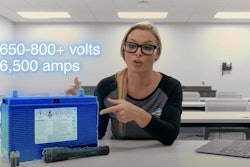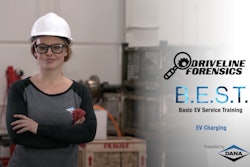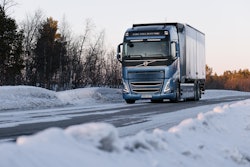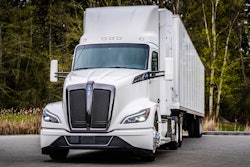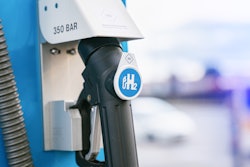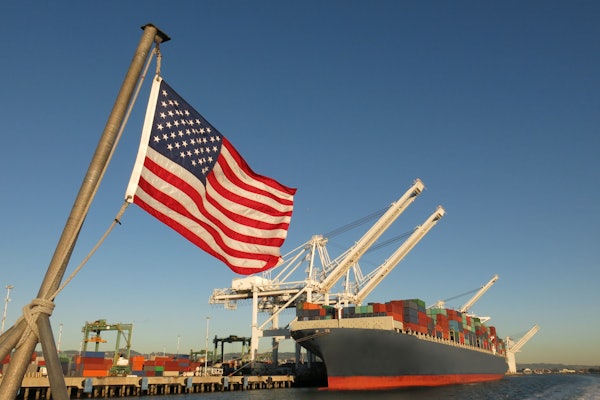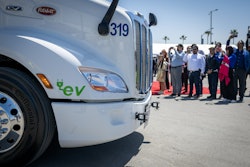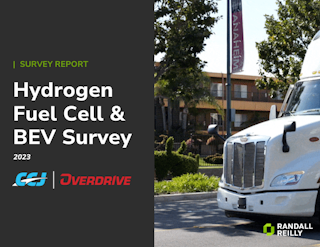A job can put you in awkward situations sometimes.
In 2019, the executive director of NACFE, Mike Roeth, and I recommended to NACFE’s board of directors that we investigate and report on the potential for hydrogen fuel cell heavy-duty trucks. That year was the wild west of zero-emission truck hype, characterized by many opinions, an extensive amount of optimism, a healthy amount of venture capital lubricating the internet, and an overwhelming amount of discussion of future regulations, and divergent politics.
As the NACFE director of emerging technologies, I felt we had to cover hydrogen in parallel with the evolving technologies of battery electric powertrains and automation technologies. The result was our December 2020 report Making Sense of Heavy-Duty Hydrogen Fuel Cell Tractors.
I must admit it took our team longer than I planned to research and write this first report on hydrogen because of the fundamental problem that turning electricity into hydrogen so you can later turn it back into electricity is inherently less efficient than using electricity directly to power a vehicle. Hey, I’m a recovering truck engineer. The energy balance is the first thing you learn in school.
Conversions are never free
Every time energy is converted there are losses. In a diesel engine, converting the chemical energy stored in diesel fuel into rotation of the wheels involves burning the fuel, creating massive amounts of heat, and additional losses tied to friction of mechanical components rubbing against each other that wastes more than 50% of the energy stored in the fuel.With hydrogen, every conversion loses energy. There are no free rides.
It can get worse. When talking about using green energy to make hydrogen, storing it underground, then using it in a power plant months later to produce electricity transmitted to some remote location where it is used again to make hydrogen, then compressed to fill a truck’s fuel tank, and finally converted back into electricity in a fuel cell to move the truck down the road.
The primary conclusion from that first hydrogen report was that hydrogen is complicated and about much more than just fuel in the truck. There are regional issues well beyond turning wheels that factor into hydrogen — factors that cross multiple industries and groups.
That first NACFE report also highlights that proposing hydrogen might require some unexpected pairings, like considering nuclear power as a requisite for a green hydrogen economy, or admitting that carbon capture has just as much viability as other unproven proposed technologies.
In 2022, NACFE felt the rapid pace of innovation and regulation required us to revisit hydrogen. Off we went again interviewing people with now first-hand knowledge of hydrogen in trucking from various prototypes and projects. Regulators at local, state and federal levels were consulted. OEMs and system suppliers were interviewed. Public reports on hydrogen were searched and referenced. The new NACFE report, Hydrogen Trucks: Long-Hauls Future? was released last month.
The primary conclusion from this new report is that hydrogen trucks are the only economically viable zero-emission solution for long-haul heavy loads. There is no other zero-emission power source for this demanding duty cycle; no “Mr. Fusion,” referencing Doc Brown’s iconic power source for his time traveling DeLorean from the Back to the Future movies.
Yes, battery electric trucks can be built that go long distances. However, adding range means reducing payload. Eventually you will be running two battery electric trucks in place of the single diesel you are replacing.
Yes, rapid charging like Megawatt+ level charging is real, and will allow greater ranges for heavy-duty trucks, but every minute not driving reduces the range that the human driver can legally operate the truck on the road. Charging once, mid-way on a trip, even if it’s only for 30 minutes, will reduce the maximum range a long-haul truck can cover in the driver’s hours of service.
Yes, the Tesla semi can operate at 82,000 lbs. gross combination weight and go 500 miles. What trade-offs have been made to accomplish that are yet to be seen. How much freight weight is that? How does that duty cycle impact battery life? Field use and publicly sharing information will be critical to understand this vehicle. NACFE hopes to provide insights this year in the Run on Less – DEPOT demonstration.
An 11-hour day for long-haul drivers can regularly result in 600 to 650-mile distances as repeatedly documented by drivers such as Joel Morrow, Clark Reed and Henry Albert who frequently blog their vehicle trip performance data on LinkedIn. These drivers were part of the group that NACFE tracked in the 2017 Run on Less demonstration showing that diesel trucks could exceed 10 mpg in real-world operations with real-world loads.
Freight weights vary significantly as NACFE reported in detail in several reports such as More Regional Haul and Electric Trucks Have Arrived: The Use Case for Heavy-Duty Regional Haul Tractors. During a recent panel for the Edmonton Hydrogen Hub, participants pointed out another truth that in Canada, and states like Washington, Oregon, Idaho, and Nevada, as much as 140,000 lbs. gross vehicle weight truck regularly operate B-train doubles, and triples operate on long daily runs with high weights.
A favorite quote of hydrogen opponents is that hydrogen is the fuel of the future and always will be, meaning it will never actually be a viable option. The significant growth in new capital, incentives, vehicles, infrastructure, regulations and fleet interest are challenging that prophecy. There are no silver bullet replacements for diesel vehicles. The new zero-emission technologies will be tuned to specific duty cycles. Fuel cells will dominate in longer daily hauls, multi-shift operations and heavier loads. Battery electric vehicles will dominate on shorter daily ranges and with lighter loads. Fleets are used to running mixed technologies from multiple suppliers, so adapting to these two new powertrains will not be a significant challenge for them.
As a reluctant exponent for hydrogen with many questions about hydrogen, I suggest reading NACFE’s recent Messy Middle: A Time For Action report which has a guide for selecting future powertrains. The starting point is assuming the baseline zero-emission choice is battery electric until you determine that it is not viable for your needs. Fuel cells, renewable fuels like RNG and renewable diesel, hybrids, etc., are all options outlined in the report. The interim between fossil fueled diesel trucks and the zero-emission future will need see many alternatives in use by fleets.

